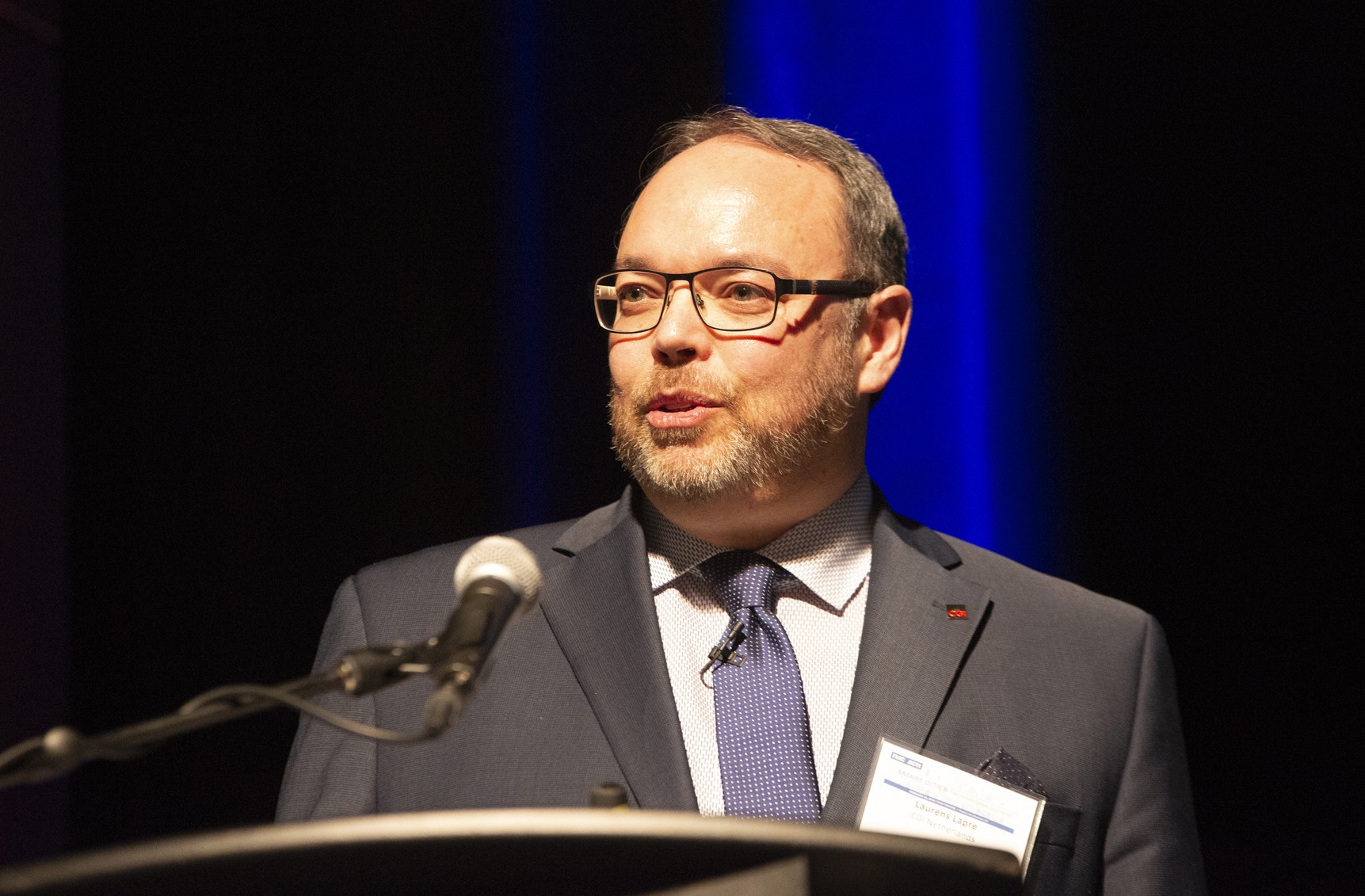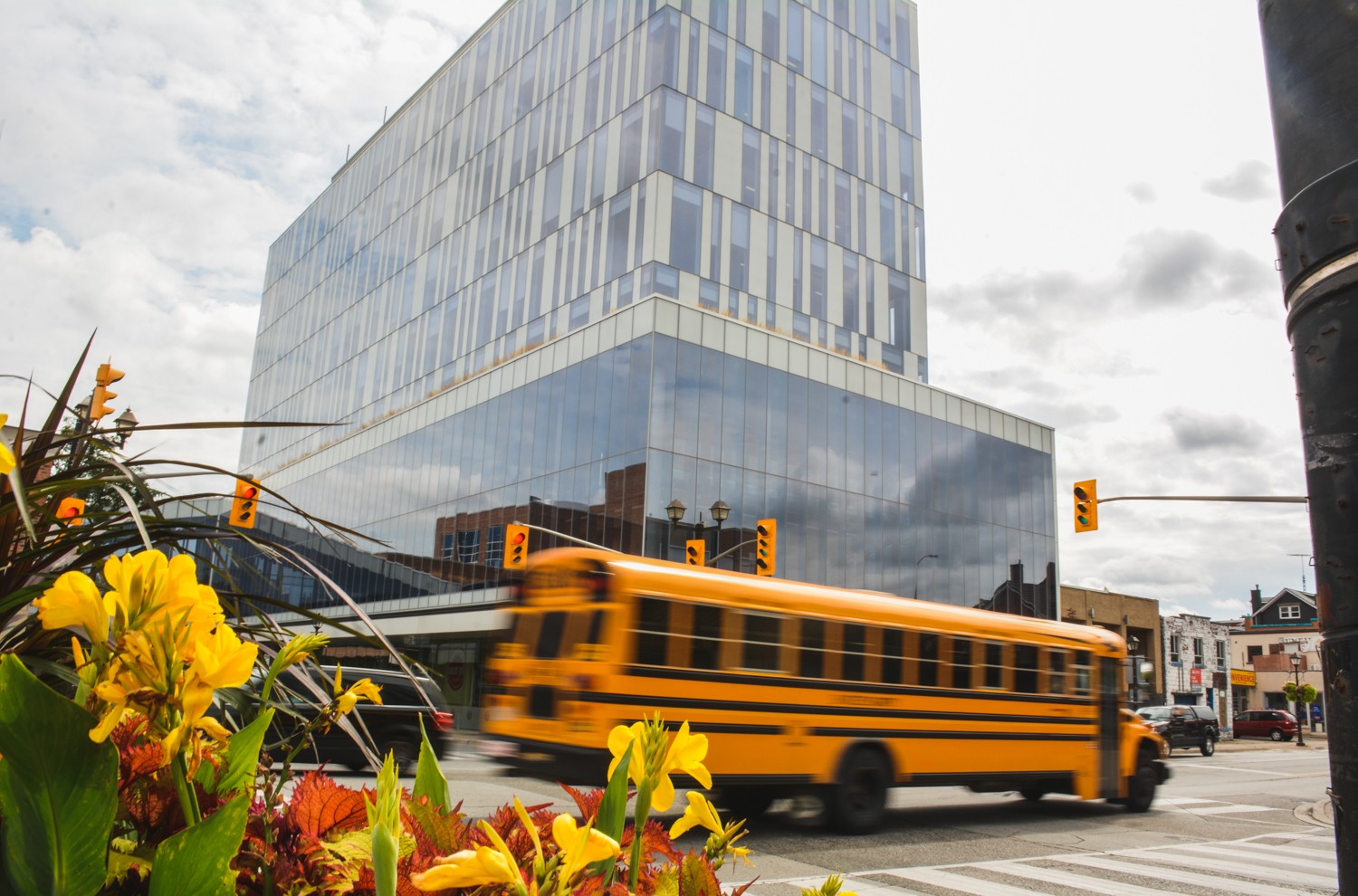
Summit suggests how digital technologies could ease Brampton’s transportation woes
Brampton has never had more digital information at its fingertips — nor a more compelling reason to tap into it.
Creative digital solutions could help fix one of this city’s most vexing problems: traffic congestion and a lack of good alternatives.
If we look down from the crow’s nest to the complications we’ve created below, we see a city under siege:
• Daily commutes have turned into campouts.
• Public transit is spotty or nonexistent.
• We’re the fourth-largest city in Ontario (ninth in Canada) but still lack all-day GO train service.
• Brampton was built for the car, and we’re as addicted to it as a user is to heroin.
• The last council didn’t fully commit to an LRT line through the downtown core, and while the current one is willing, the project is now stalled as Queen’s Park retreats from long-term capital improvement projects to tighten its fiscal belt.
Even if money is tight, the need remains, and a historic lack of political will has left this city choking on exhaust fumes while smaller cities like Vaughan, Kitchener-Waterloo and Scarborough are getting subways or light rail systems.
The good news is that embracing digital solutions allows cities to do more with less.
That’s why this week’s one-day ITAC Smart Cities Technology Summit at the Rose Theatre, co-sponsored by the City of Brampton, was so significant. Mayor Patrick Brown opened it by saying we need to “connect our city to new, innovative ways.” The summit explored ways to help municipalities develop their own innovative technologies to best serve their citizens’ needs.

Mayor Patrick Brown
Fittingly for Brampton, the first subject discussed was ‘Human Mobility,’ featuring a panel of three experts talking about the role of digital technology in moving people and goods in an urban setting — and most importantly, changing behaviour.
The latest buzzword in urbanism is “traffic psychology.” Luckily, one of the participants on the Human Mobility panel practises the art: Meet Laurens Lapré of CGI, a Netherlands-based company that’s a big player in the future of transportation management, using space, wireless, radar, sensor and other advanced technologies to drive innovation in a wide range of ITS (intelligent transportation systems) areas.
Lapré´s thoughts on changing behavior patterns seem ready-made for the Brampton market. Our car addiction is a dangerous one-way street, says Lapré. It’s given birth to the role of traffic psychologist, someone who studies a community’s indulgence in car use and looks for ways to wean people away from it.
Lapré’s presentation talked about Inner City Congestion Avoidance — describing what happens when you create disincentives to enter the core area in a vehicle. The Netherlands, a tiny country, has been forced to consider how it can make better use of limited land for transport. A huge amount of goods passes through its busy ports, explained Lapré, and also through the countryside. Major cities like Amsterdam and Rotterdam are crowded and were built in the age of horse and buggy. That density has led naturally to much higher use of bicycles, rail and buses, and the development of some of the best public transit systems in the world.

Laurens Lapré, intelligent transport systems and mobility services with CGI
But as in all societies, there are stubborn holdouts who pile into their cars every day as their primary means of getting around. Lapré spoke about how CGI partnered with one municipality to change that, with the goal of cutting a thousand cars a day from the downtown streets.
The solutions revolved around changing the behaviour of people who were commuting by personal vehicle even though they lived within 20 km of work. The program used digital information to suggest different driving routes; used GPS tracking to help drivers avoid traffic tie-ups; and instituted a points-based incentive system, with points rewarding good behaviour.
The last solution had the biggest impact. People who used alternative transportation earned more points. Triple points went to those who jumped on bikes. Users could swap points, or cash them in for other public transit vouchers. As the points program expanded, one incentive was to allow participants to donate points to charities, to help fund sports programs for children, or give them to the local hospital.
This proved extremely popular.
After six months, 40 percent of the program participants had changed their habits: more of them were working from home (which earned more points), had switched to public transit, or were cycling to work.
Combining local knowledge (for example, many of the car users drove by the very hospital their points would help) with incentives helped bring about change, said Lapré.
There were other factors at work, too. Participants began communicating with each other. Children would chide their parents if they switched back to using a car. Everyone was getting healthier and losing weight.
And that is just one of myriad possibilities for using digital technology to free our streets while improving the quality of life, in the face of two trends that have reshaped Canada in recent decades: an accelerating move to big cities and the expansion of connected technologies into virtually every area of our lives.
Brampton is the poster boy for hyper-expansion; it’s the second-fastest growing city in the country. We now use connected devices to help us work, shop, date, stay connected with family, engage in our communities, and move from place to place.
As more people pour in, Brampton suffers from its history of sprawling residential builds. It’s hard to pay for public transportation when it means subsidizing buses to reach a light dusting of homes on the outskirts. Sometimes, we don’t send them there at all. The transportation gap for those who don’t own a car creates another societal issue: isolation. This lack of connectivity is a symptom of Brampton’s identity crisis. A vast majority of our population exits the city each day to go to work.
The problems brought about by sprawl led to the provincial Places to Grow legislation brought in in 2005, which is meant to force suburban cities like Brampton to grow up, not out. But our current lack of compactness has created a conundrum: even if we wanted to grow public transport, the numbers aren’t there to pay for it. An over-reliance on the car doesn’t make this city unique, but it does make finding solutions to sprawl more difficult.
Lapre´ was joined on the panel by Annalise Czerny, executive vice-president of Presto, the fare card system used on public transit systems throughout the GTA, Hamilton and Ottawa. Tracey DeLeeuw, of EY Global’s automotive and transportation sector, also offered her expertise. All three foresee a future where commuters, governments, academia, and businesses will be part of an interactive network that serves all needs.
Czerny says the opportunity to gather anonymized digital information on transit users through something like the Presto card offers transit planners valuable information about patterns of commuter flow, which may provide cues to, for example, provide incentives to people to travel during off-peak hours.
Commuters can use an app to watch traffic flow or get direct feedback from transit systems. Companies, armed with digital information, can stagger their work hours to reduce overcrowding at rush hours. Transit use can be individualized.

Large companies with thousands of workers can work in concert with the city’s transportation people to either bus employees right to work or to major transit hubs that connect them to their workplaces. This is already happening in many communities in California’s Silicon Valley. With the use of apps, transit users can identify and monitor traffic flow.
“We need to figure out, as a government agency, the role we’ll play as a catalyst for all this, and how we can help better govern these ecosystems,” said Czerny. “We have to change our car-first culture.”
There is no silver bullet, says DeLeeuw, but futurists are already designing options for an aging demographic.
She says a new style of scooters will one day fill our sidewalks, and cities will have to build sidewalks wide enough to accommodate them. She also foresees a time when robots will assist in moving people, including carrying packages to and from a transit hub.
The Netherlands has been successful in getting addicted users to let the car go. Lapré says the solution was simply breaking them of a bad habit. “[People] need the push,” he says.
Pricing public transit is a big-P policy issue, Czerny added. Car users need to evaluate the true cost of owning and using a car, especially when they commute — including parking, maintenance, insurance, gas, licence, etc. — versus the cost of public transit.
Drivers “don’t calculate costs on a per-trip basis,” she said. “If they did, they might make more informed decisions.”
The role of the private sector in all this is critical, she said.
Companies should consider including in their employee benefit packages a public transit payout. Some may be able to offer bus service to link their employees to a transit hub. Or change work hours to avoid putting employees on the road during peak hours.
Behavioural change will fuel future transit solutions, said Lapré.
It might take years for Brampton to wean itself off the car, and finding financing for public transit is tough – especially in today’s parsimonious
environment. But it’s critical to keep all options on the table, and exploring digital solutions that link government initiatives to the latest smart phone technology might produce the best transit options for citizens.
Brampton’s 2040 Vision, a futuristic plan that drew input from thousands of citizens in 2017 and was completed by Vancouver-based urbanist Larry Beasley, lays out the opportunities. It includes the goal of eliminating the city’s dependence on the car.
Vision 2040 wants to see everything running through a transit network that includes walking and cycling routes, new travel technologies and a figure-8 loop rapid transit line (light rail or bus) that links to a regional transit system. This will connect business with academia, and homes to jobs. The plan even suggests offering free transit with direct access to the downtown core.
If this seems far-fetched and impractical, remember that necessity is often the mother of invention. And there’s a sense of urgency in Brampton, which is growing 2.5 times faster than the national average. It’s engulfing its natural landscape through sprawl and experiencing worrisome social and health problems. Efficient public transit and measures to cut commute time improve health and quality of life and draw in business.
Joe Pittari, interim chief operating officer of the city, opened the Smart Cities digital forum, and said there are hopeful signs of change here. Transit ridership grew by 18 percent in 2017 and 14 percent in 2018, remarkable when compared with the national average increase of 1.5 percent. That’s why, he says, the 2019-2021 budget prioritizes meeting the city’s surging growth needs in a timely, sustainable and responsible manner, while generating value for taxpayers.
He stressed that Brampton already is a “smart city,” at least potentially, because it sits in the middle of the Toronto-Waterloo Innovation Corridor and its 6 million people. “Brampton is Union Station,” he said.
The corridor is home to 30 percent of Canada’s university students, 250,000 of its tech workers, and the majority of the country’s corporate headquarters. It produces 60 percent of Canada’s innovation activity. Meanwhile, Brampton’s population has a median age of 36 years, far younger than the provincial average. Young people are digital warriors, and the city is already using this technology to time and monitor road closures, signal timing, and monitor and adjust for traffic congestion. Everything is now being measured in real time.
Digital is the road most travelled by stakeholders in vast transportation networks.
The smartest cities are those embracing digital solutions to solve their transportation woes. That’s the accepted view of the panelists who took part in the discussion at the Rose Theatre this past week.
Traffic psychologists can help change the behavior of commuters now and in the future. Smart cities should listen to what they have to offer.
Digital solutions are paving the way.
Submit a correction about this story


